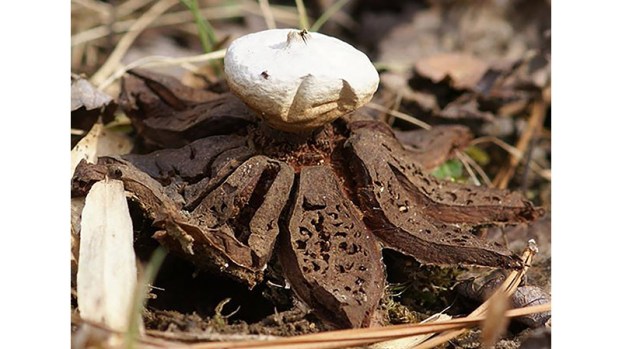COLUMN — A walk in the woods
Published 6:00 am Friday, January 8, 2021
|
Getting your Trinity Audio player ready...
|
This time of the year, when the forest is a study in brown, beige and gray with a few green accents, I like to walk favorite trails and remember what I’ve seen at various points over the years.
The Lake Shore Trail at Holliday Lake State Park is one of my most favorite trails. It never ceases to amaze me. There are always treasured old sites to revisit – the bend in the trail where a large black rat snake suns himself on warm days in early spring; the hollow tree where I found a very long black rat snake clinging to the inside of the hollow with his head sticking out the side; and, of course, the skunk cabbage nursery. And no matter how many times I walk this trail, there is always something new to delight me.
If I walk down the wooden steps from the road to the trail, I always look for earthstars (Geastrum or Geaster) on either side of the steps. I’ve never managed to find them until they’re past their peak, but, nevertheless, they’re an interesting find. The outer layer of this fungus splits into segments that turn outward in a star-shaped pattern. The inner layer is an onion-shaped spore sac. In some species, the star-shaped outer layer has the ability to close over the spore sac during rainy weather. When the weather is dry, it opens and pushes the spore sac higher up to facilitate releasing the spores.
There are some trees down on the Lake Shore Trail. My favorite route requires climbing over the roots and trunk of a very large one. I’m always worried that I’ll fall through a gaping hole in the debris, but climbing is necessary to continue on the trail. I usually cross a bridge and start checking on Christmas ferns, running cedar, grape-leaf ferns, moss, and mushrooms or other fungi. There is usually plenty of velvety pincushion moss around the bases of trees. The running cedar is everywhere along this part of the trail and, right about now, it has fruiting bodies.
If I walk down to Saunders Creek, I like to photograph the interplay of the water and the rocks. I love both the sound of the creek and its sparkle as it flows over the rocks. If I explore the banks of Saunders Creek, I usually find liverworts, which may be the most primitive plants still in existence. One type seems very reptilian to me; it just appears to ooze over the earth and looks scaly. In the forest, these non-vascular plants are fascinating, but in commercial greenhouses, they can be highly competitive pests.
If I turn left after crossing the bridge, I’m in a swampy area that I call the skunk cabbage nursery where my favorite plants have been blooming since early December. If I continue along the trail, I’ll find the slightly weather-beaten leaves of foam flower and heuchera. There are plenty of cranefly orchid leaves too, and I always make a mental note so that I can find the flowers in late summer. So far, I’ve failed every year.
As the trail moves away from the creek and gets steeper, the plant life changes. There’s less running cedar but plenty of mountain laurel. If I continue walking for another mile or so, I’ll eventually get to the far side of the lake and find the trailing arbutus. It looks very ragged now, but in early spring it will produce pale pink, waxy flowers that are very fragrant and guaranteed to make even the grumpiest person smile.
Walking a familiar trail is such a peaceful way to spend an afternoon. It’s a moving meditation and all about being at one with nature.
Make time to enjoy nature in 2021. You’ll be glad you did.
DR. CYNTHIA WOOD is a master gardener who writes two columns for The Herald. Her email address is cynthia. crewe23930@gmail.com.







